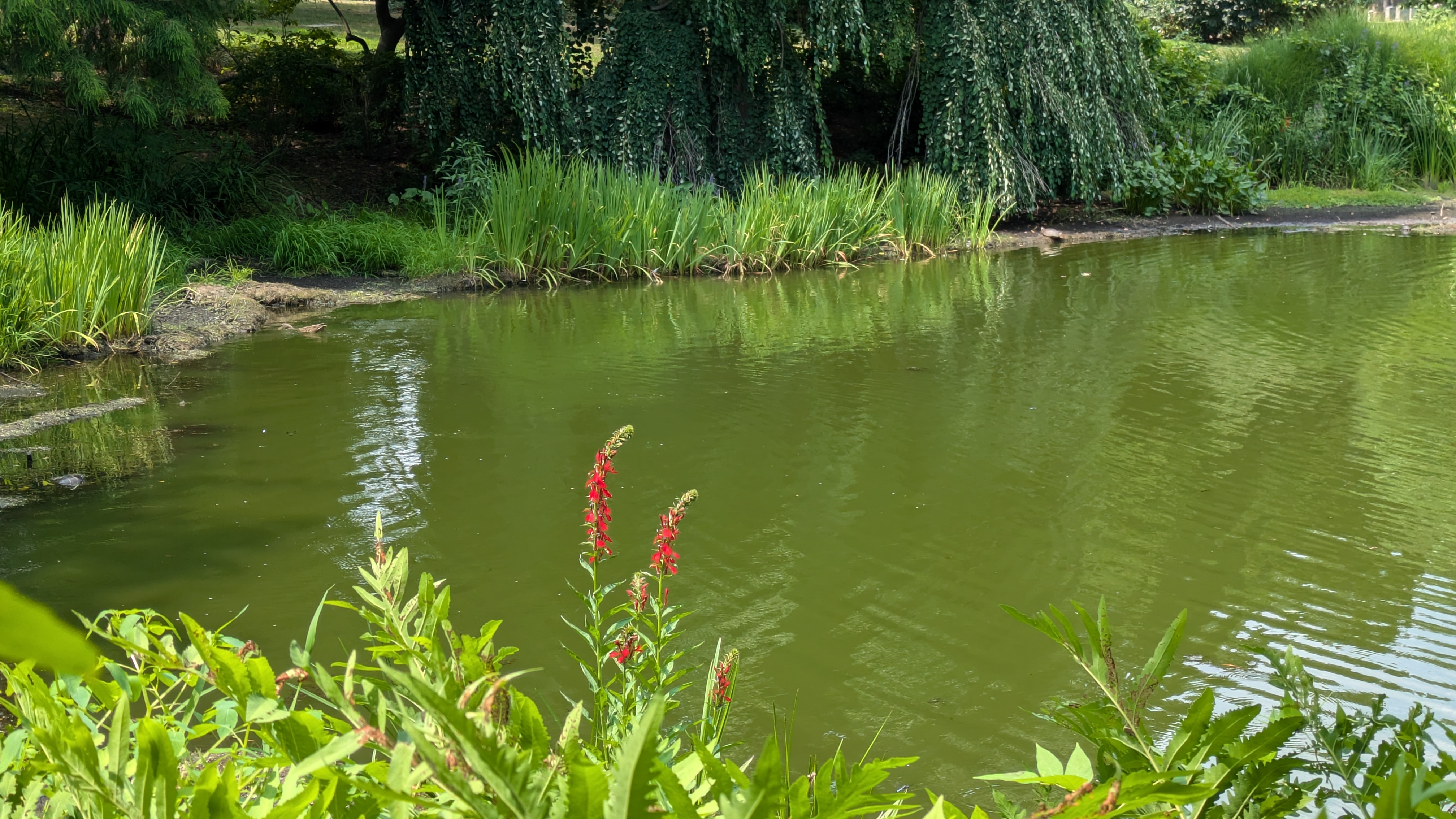Horticultural Highlight: Lobelia cardinalis, Cardinal Flower
Jim Gorman July 27, 2024 Plants & Wildlife

Cardinal Flower is one of the great vivid sparkles of color in the late-summer, shaded garden. It is worth quoting William Cullina from his 2000, Growing and Propagating Wildflowers, “It is hard to describe the intensity of a Cardinal Flower bloom. It is as if the flowers catch sunlight inside some sort of secret crystal matrix and let it bounce around for a while until it has been stripped of all but the deepest, purest red imaginable. Then and only then is the light released to burn crimson into our corneas.”
Visionary founder of Mount Auburn, Jacob Bigelow (1787- 1879), physician, botanist and Harvard Medical School Professor for forty years, also praised the beauty of Cardinal Flower. In the 1840 Third Edition of Florula Bostoniensis. A Collection of Plants of Boston and its Vicinity [1814 First Edition], Bigelow wrote, “This superb plant, cultivated and much prized in Europe, is a native of our meadows and brooksides. It rises to the height of two feet and upward, with a simple, erect, leafy stem. Leaves alternate, ovate-lanceolate, acuminate, and serrate. Raceme terminating the stem, consisting of large flowers, more or less inclining to one side, of a bright scarlet color. Corolla with a long tube ending in five spreading segments, the three lower ones widest.”
Apropos are a few excerpts from the 1906 Journal of Henry David Thoreau (1817-1862), [August 20, 1851] “In the dry ditch near Abel Minott’s house that was, I see cardinal-flowers, …Some are four and a half feet high…It shows how far a little color can go; for the flower is not large, yet it makes itself seen from afar, and so answers the purpose for which it was colored completely. It is remarkable for its intensely brilliant scarlet color.” [August 6, 1852] “I love to follow up the course of the brook and see the cardinal-flowers which stand in its midst above the rocks, their brilliant scarlet the more interesting in this open, but dark, cellar-like wood; …” [August 26, 1856] “The cardinals in this ditch make a splendid show now, …They nearly fill the ditch for thirty-five rods perfectly straight, about three feet high. I count at random ten in one square foot, and as they are two feet wide by thirty-five rods, there are four or five thousand at least, and maybe more…That is the most splendid show of cardinal-flowers I ever saw.”
Emily Dickinson (1830-1886) grew cardinal-flowers and included them in her poems and writings. In the winter of 1873 she wrote:
White as an Indian Pipe
Red as a Cardinal Flower
Fabulous as a Moon at Noon
February Hour
In The Gardens of Emily Dickinson, Judith Farr speculates about this quatrain “…February seemed red to her…it brought her “scarlet expectations”: … (“Expectations,” of course, were always “scarlet” to Emily Dickinson. It was in their nature to be. In her intensity, she recognized that blessings to come-like spring- were “forever here,” if one consulted the imagination.) Farr also wrote, “In 1882, Emily Dickinson composed a sorrowful reminiscence of her childhood by picturing her quest for Lobelia cardinalis: “Two things I have lost with Childhood – the rapture of losing my shoe in the Mud and going home barefoot, wading for Cardinal flowers and the mothers reproof which was more for my sake than her weary own for she frowned with a smile. …now mother and Cardinal flower are parts of a closed world“ (Dickinson’s affection for her mother, which in its full power came late, is nowhere shown so clearly as in this linkage of lobelia..)”
So you will join fine company if later in August on a visit to Mount Auburn you seek out and admire Cardinal Flowers, which are pollinated by ruby-throated hummingbirds, as well as bees and butterflies. Best viewing may be on Azalea Path, at the western section of Willow Pond.











Comments
Comments for this post are closed